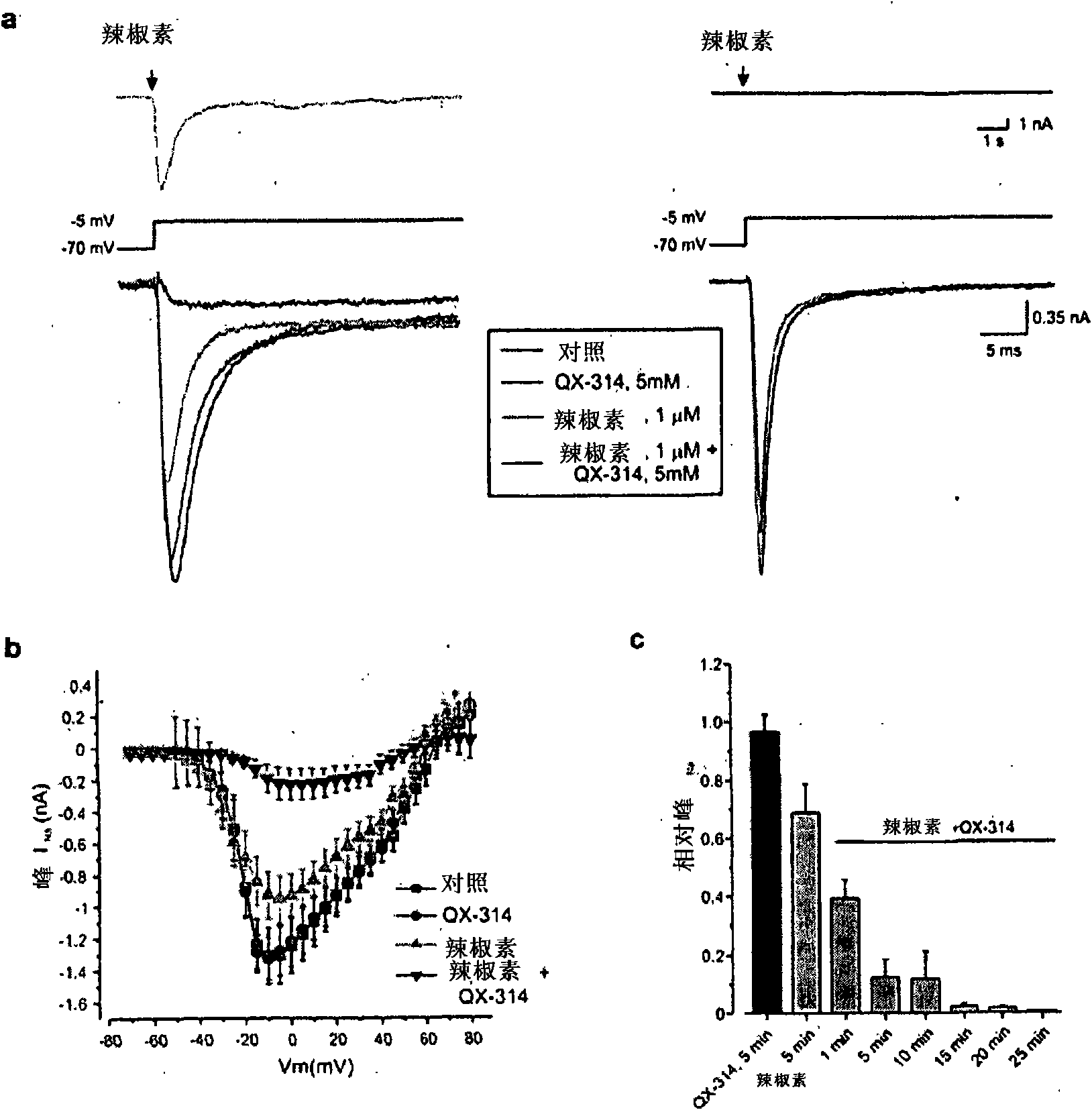Methods, compositions, and kits for treating pain and pruritis
A technology of composition and compound, applied in the field of treatment of pain and itching, composition and kit, capable of solving problems such as autonomic fiber block
- Summary
- Abstract
- Description
- Claims
- Application Information
AI Technical Summary
Problems solved by technology
Method used
Image
Examples
Embodiment 1
[0213] We recorded currents through voltage-dependent sodium channels in adult rat DRG neurons using whole-cell voltage clamp recordings. To select nociceptors, we recorded from small (24±5 μm; n=25) neurons and tested the expression of TRPV1 receptors in these neurons by short (1 sec) application of 1 μM capsaicin. In 25 / 25 small neurons tested, capsaicin produced prolonged (10±3 sec) inward currents ( figure 1 A, upper panel), consistent with neurons acting as nociceptors. Sodium currents were elicited by a depolarization step holding the potential at -70 mV. Soaking alone (Bath) applied 5mM QX-314 had the least effect on sodium current (after 5 minutes of application, it decreased by 3±0.5%, n=25) ( figure 1 A, left column; b). Capsaicin alone (1 [mu]m, 1-10 min) resulted in a modest reduction in sodium current (31±9% inhibition (n=25)). However, when QX-314 was administered together with capsaicin, the sodium current was almost completely abolished (98±0.4% inhibition,...
Embodiment 2
[0232] We also show that eugenol (C 10 h 12 o 2 ), an allyl chain-substituted guaiacol, 2-methoxy-4-(2-propenyl)phenol (the active ingredient in clove oil, a non-stimulatory agonist of the TRPV1 receptor ), promotes the entry of QX-314 into dorsal root ganglion neurons by activating TRPV1 channels. Figure 5 Voltage-clamp recordings of sodium channel currents in small dorsal root ganglion neurons are shown. The data demonstrate that eugenol alone has a modest inhibitory effect on sodium current (10-20% inhibition). Coadministration of eugenol and QX-314 produced a progressive blockade that was complete after 7 minutes. Two examples are shown, which are representative of 10 trials with similar results. As shown above, external QX-314 alone had no effect, whereas internal QX-314 blocked sodium channels. Thus, these experiments suggest that eugenol promotes QX-314 entry into DRG neurons by activating TRPV1 channels.
Embodiment 3
[0234] Figure 6 Results are shown for co-administration of the TRPA agonist mustard oil (MO) (50 μΜ) and QX-314 (5 mM). MO alone reduced the sodium current by 20-30%, which plateaued after about 3 minutes. Co-administration of MO and QX-314 significantly reduced sodium currents.
PUM
 Login to View More
Login to View More Abstract
Description
Claims
Application Information
 Login to View More
Login to View More - R&D Engineer
- R&D Manager
- IP Professional
- Industry Leading Data Capabilities
- Powerful AI technology
- Patent DNA Extraction
Browse by: Latest US Patents, China's latest patents, Technical Efficacy Thesaurus, Application Domain, Technology Topic, Popular Technical Reports.
© 2024 PatSnap. All rights reserved.Legal|Privacy policy|Modern Slavery Act Transparency Statement|Sitemap|About US| Contact US: help@patsnap.com










